Toyota Hilux vs Isuzu D-Max: Which is the Best Pick-Up Truck?
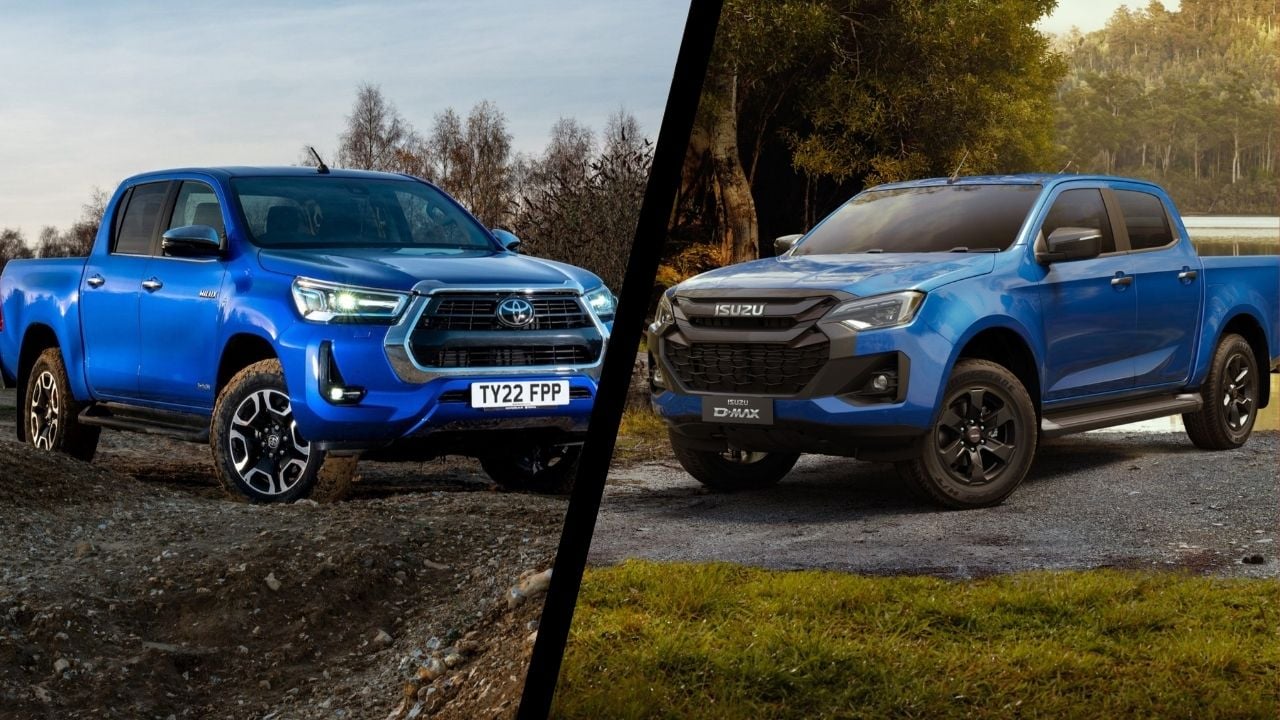
Reputation can carry you a long way in the commercial vehicle market and when it comes to pick-up trucks, few models can live up to the good favour the Toyota Hilux and Isuzu D-Max have built up over the years... but which is the better option?
You’ll struggle to find a vehicle as multi-functional – or as multi-talented – as the humble pick-up truck.
Considered the ultimate workman’s tool, for a long-time pick-up trucks were classed as no-frills commercial vehicles that focused primarily on lugging hefty payloads, pulling even heavier tows and crossing terrain that vans couldn’t dare to attempt.
Times have changed, however, with the back-to-basics pick-up truck becoming a popular draw for the more adventure orientated buyer, prompting a shift upmarket for today’s offerings
The Hilux and D-Max are two prime examples. What were once no-nonsense sluggers that put work above play, the latest versions are comparatively lavish and full of technology – even if they’re still not adverse to getting their boots muddy.
It’s no wonder they’ve built such a loyal following over the decades - but which is best? Time to find out if we’re Team Toyota or Team Isuzu...
Reputations Earned
These Japanese built workhorses have been mainstays in the pick-up truck segment for decades.
In fact, the Toyota Hilux is one of the longest-running nameplates in the automotive industry with its origins stretching right back to the 1960s.
Almost six decades and eight generations later, the Hilux remains a byword for capability and durability around the world with examples of varying age still in service and often found in remote locations.
Don’t assume that the latest model is any less tough, though. In fact, if you needed proof that the current generation continues that rock-solid tradition, the Hilux has reigned victorious in the gruelling Dakar Rally for three of the past four years.
While Isuzu’s lineage in the UK pick-up truck space is comparatively modest – starting in 2002 with the Rodeo – the manufacturer has specialised in hardy four-wheel drive off-roaders since the 1980s.
The Isuzu D-Max is also the only model the firm has sold in Europe for a long time, so while there is a lot of pressure riding on the model to succeed, the fact that the Japanese company is still going strong speaks to the ability of its sole flag-bearer.
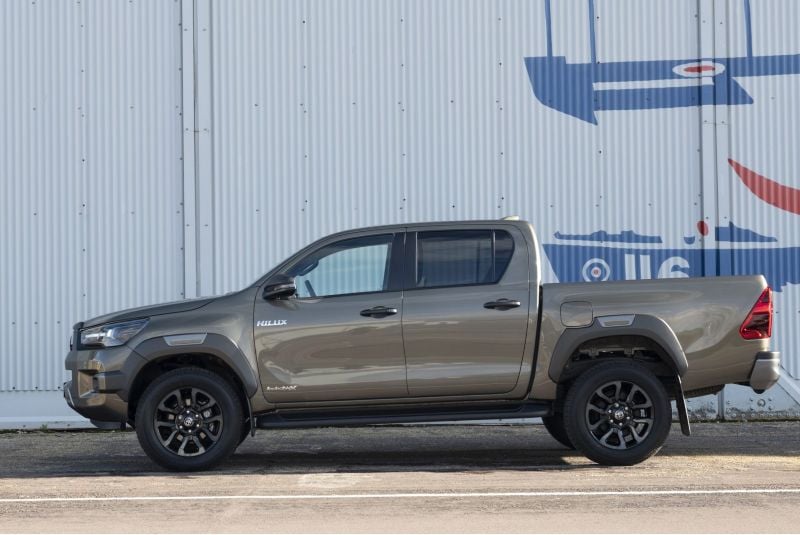
Lease the Toyota Hilux if...
- You’re after a rock-solid pick-up truck
- You need outright load carrying capacity
- You would benefit from extra power and torque
- You want the reassurance of a 10-year warranty
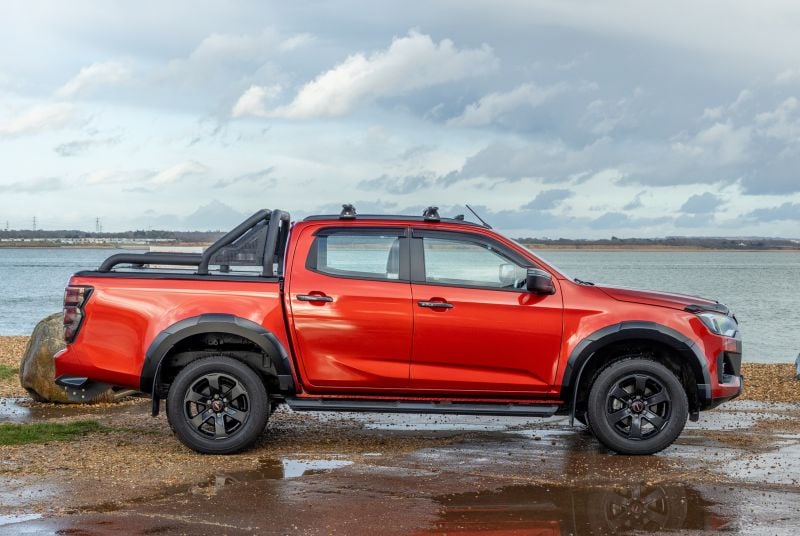
Lease the Isuzu D-Max if...
- You regularly haul heavy payloads
- You’re planning to drive off-road
- You need a no-frills business workhorse
- You are after a well-equipped interior
Lease A Toyota or Isuzu Pick-Up Truck with Vansdirect
Leasing a new Pick-Up Truck with Vansdirect has never been easier or better value.
Get the right pick-up truck at the right deal, fast and hassle-free with the best pick-up van leasing deals available across a wide array of models, including the Toyota Hilux, Isuzu D-Max, Ford Ranger and Maxus T60 MAX.
Speak to our expert team today and you could be driving a new pick-up truck for less than you think.
Hilux vs D-Max: Cargo Load, Dimensions & Practicality
While lifestyle-orientated Double Cab pick-up trucks have ruled the sales charts in recent years, neither Toyota nor Isuzu have entirely abandoned their humble working vehicle origins.
In fact, the Toyota Hilux and Isuzu D-Max are now the only remaining pick-up trucks on sale in this country that offer a full house of body styles – Single Cab, Extended Cab and Double Cab.
Two-seater Single Cabs have gained some prominence in the wake of being exempted from the new Benefit-In-Kind tax classification as they are mostly intended for business purposes only.
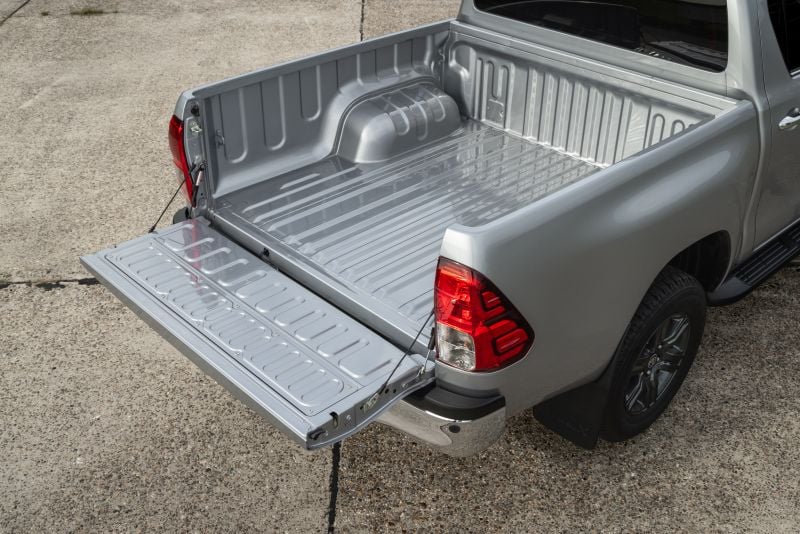
It’s therefore telling that both Toyota and Isuzu persevere with this body style – unlike rivals from Volkswagen, KGM and Maxus – which is indicative of both wanting to keep a firm foothold in the commercial sector.
Regardless, it is the Double Cab version of both models that will remain more popular options.
In terms of outright load space, the Hilux has the upper hand over D-Max no matter which of the three body styles you choose.
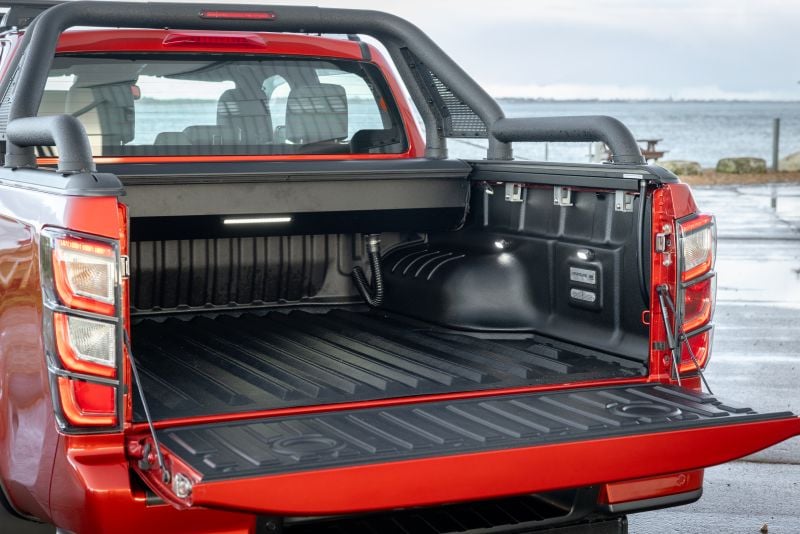
Load length in the most popular Double Cab body style stretches to 1555mm for the Hilux, while the D-Max makes do with 1520mm. The Hilux is also moderately wider, though the D-Max’s load bay is 20mm deeper.
Single Cab versions sacrifice the rear bench for an extended load bay with the Hilux offering a very generous 2350mm in terms of length, while the D-Max has 2290mm.
Hilux vs D-Max: Weights, Loads & Towing
What the Isuzu D-Max loses out in load space, however, it makes up for by having a more generous payload capacity.
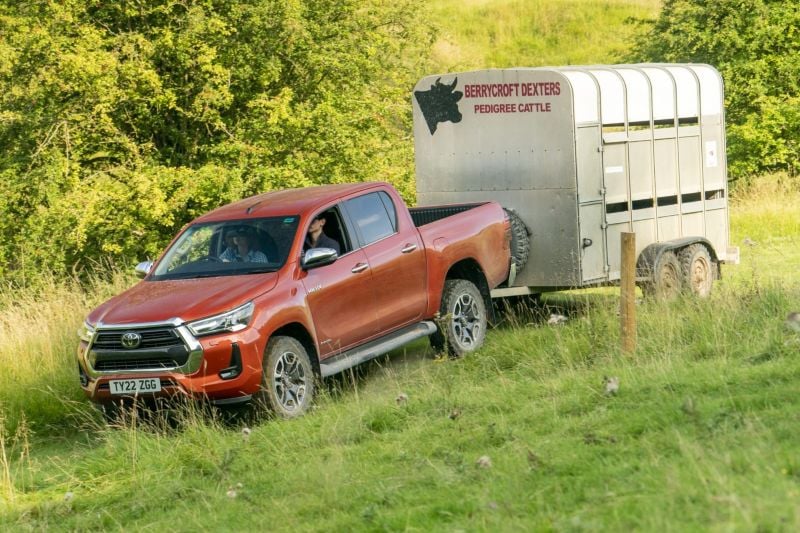
All D-Max models have a payload capacity of at least 1085kg, with the flagship D-Max V-Cross Double Cab capable of lugging up to 1105kg – more than any Toyota Hilux, Ford Ranger or VW Amarok.
By contrast, the Hilux’s most generous payload for a Double Cab model peaks at 1015kg.
It’s a similar story with Single Cab models with the D-Max enjoying a substantial 1205kg payload, whereas the Hilux settles at 1025kg.
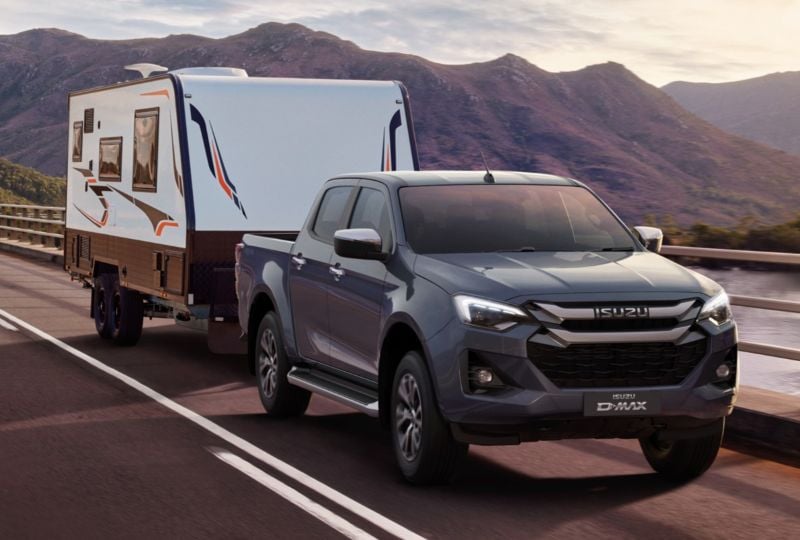
Both the Hilux and D-Max are, however, rated at a maximum 3500kg for braked towing capacity in line with rivals in the pick-up truck segment.
Hilux vs D-Max: Engine, Performance & Running Costs
Perhaps the most ‘make-or-break’ comparison – one that could determine whether you lean towards a Toyota Hilux or an Isuzu D-Max – can be made by what is lurking under the bonnet of each.
There are two engine options available with the Hilux – either 2.4-litre or 2.8-litre turbodiesels, referred to as D-4D.
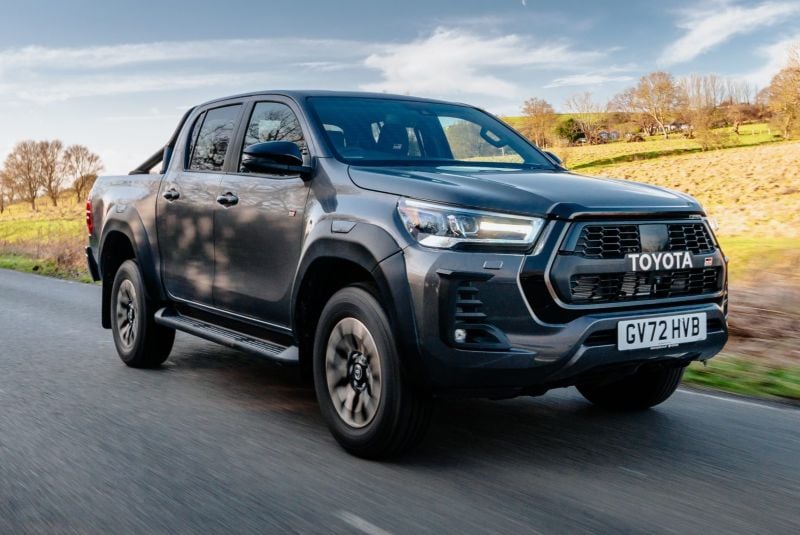
Of the two, the 2.8-litre engine is the newer unit and was added to address feedback from customers that felt the 2.4-litre engine needed more power and torque to capitalise on the Hilux’s pulling power.
With 204bhp, the 2.8-litre D-4D has a considerable power advantage over the D-Max (see below), while it can generate upwards of 500Nm of torque depending on whether you choose a manual or automatic gearbox.
A recent update also saw the introduction of a small but effective 48V battery that gives the Hilux stop-start technology to help reduce carbon emissions figures.
It’s also the engine mated to the Dakar Rally-inspired GR Sport II trim, which is a cosmetic rival to the Ford Ranger Raptor with its raised ground clearance, beefed up bodywork and unique alloy wheels, even if it has not been tuned to be faster than other trim levels using the same engine.
The larger engine hasn’t replaced the 2.4-litre though, which – with 150bhp on tap and 400Nm of torque - is more of a direct equivalence to the D-Max.
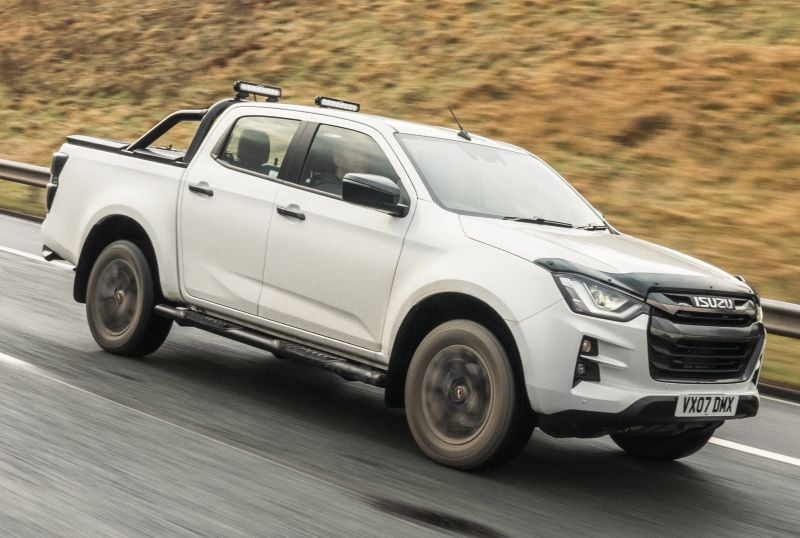
Though the D-Max has an extensive range of body styles and trim levels, it uses the same four-cylinder 1.9-litre turbodiesel across the entire line-up.
Generating 160bhp, it gives away some power to main rivals, while it doesn’t generate quite as much torque at 360Nm.
To its advantage, however, is a quirk that allows the D-Max to be the only Double Cab pick-up on sale in the UK that is permitted to travel at the same national speed limits as passenger cars.
Laws in the UK prevent vehicles with an unladen weight exceeding 2040kg travelling at the same national speed limit as cars. This means on single-carriageways the erstwhile 60mph speed limit is reduced to 50mph for these models, while on dual-carriageways it is reduced from 70mph to 60mph.
This, however, doesn’t apply to the Isuzu D-Max since no version of the model exceeds 2040kg – unlike the Ranger and Hilux. As such, this law doesn’t need to be applied in the same way and allows drivers of a D-Max to travel at 70mph legally on dual-carriageways.
Hilux vs D-Max: Off-Road
Both manufacturers here have made a name for themselves in the off-roading space over the decades, so it is little surprise that both the Toyota Hilux and Isuzu D-Max are immensely capable when the going gets tough.
For the most part, both models can venture further on challenging terrains than most vehicles – car or truck - thanks to their simple but sturdy ladder-frame chassis layouts.
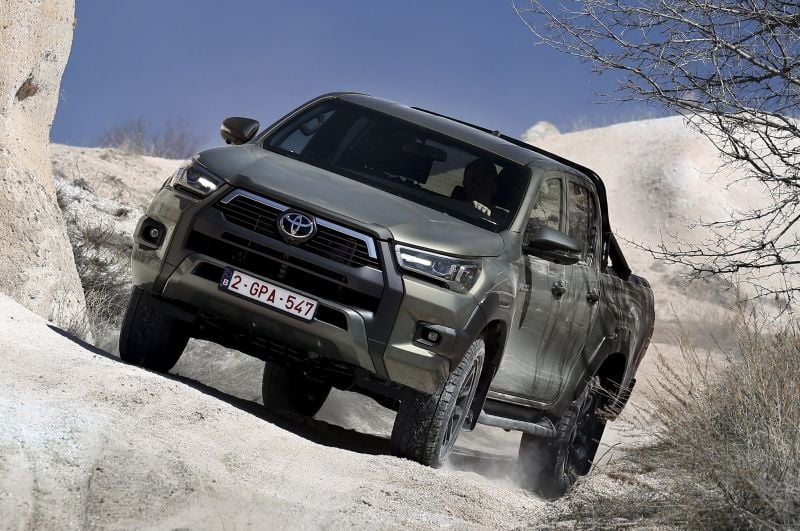
It’s this reassurance that makes the Hilux and D-Max such a popular draw for farmers and adventurers around the world.
Each model has its own approach to managing performance off-road to ensure you don’t get caught out.
The Hilux offers Multi Terrain Select, which can operate automatically, or you can manually choose its specific modes, such as Dirt, Sand, Mud, Deep Snow and Rock.
There is also hill assistance – both for uphill starts and steady downhill descents – and Active Traction Control that monitors the grip available to ensure power is delivered accordingly.
Of the two pick-up trucks, the Hilux has the better ground clearance all the way up to 310mm, whereas the D-Max sits lower at 230mm.
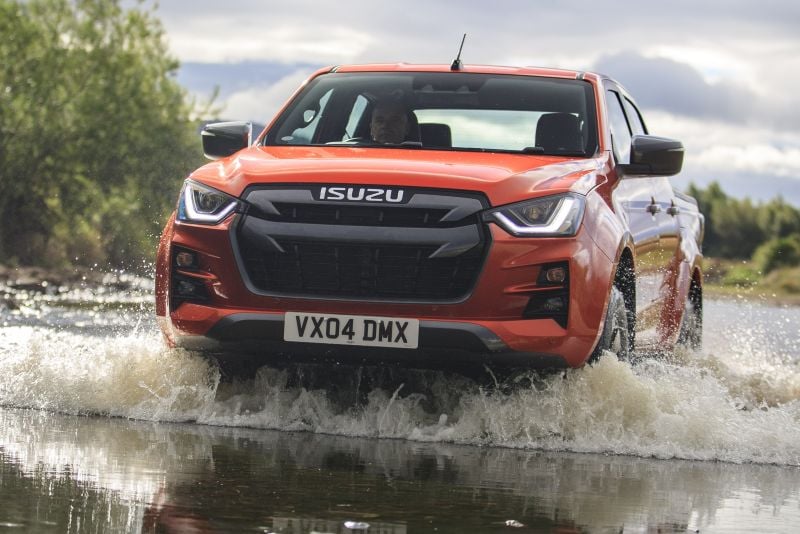
The D-Max, meanwhile, added Rough Terrain Mode in 2025, an off-road traction control aid that works with the rear differential lock to maximise torque-transfer and driveability. It is able to modulate the brake force to individual wheels, so that when slip is detected, it sends torque to the wheels with the most grip.
There is also a four-wheel drive ‘Shift-on-the-Fly’ system, while the D-Max has a wading depth of 800mm and an approach angle of 30.5-degrees, which is more generous than the Hilux’s.
Hilux vs D-Max: Cab & Interior
While both the Toyota Hilux and Isuzu D-Max do without the ultra-modern, big screen grandeur of the Ford Ranger and Volkswagen Amarok, this doesn’t necessarily count against them.
Indeed, some Ranger trims give an impression of it being too nice to consider tracking muddy boots into it, so the darker colours and hard-wearing materials of the Hilux and D-Max have a more robust feeling.
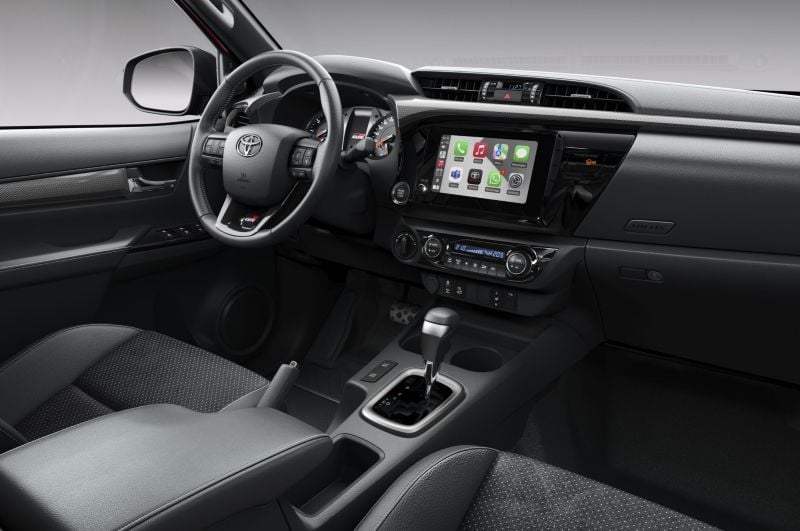
Admittedly, the Hilux’s dashboard is crying out for an update – coming in 2026 – with its fairly small infotainment screen, analogue dials and controls that are lifted from other now discontinued Toyota models lacking some upmarket polish.
Still, it’s all sturdily screwed together and should withstand all the usual knocks and scrapes associated with a working life.
The D-Max, meanwhile, received a mid-cycle makeover recently, with most of the updates being focused on the interior.
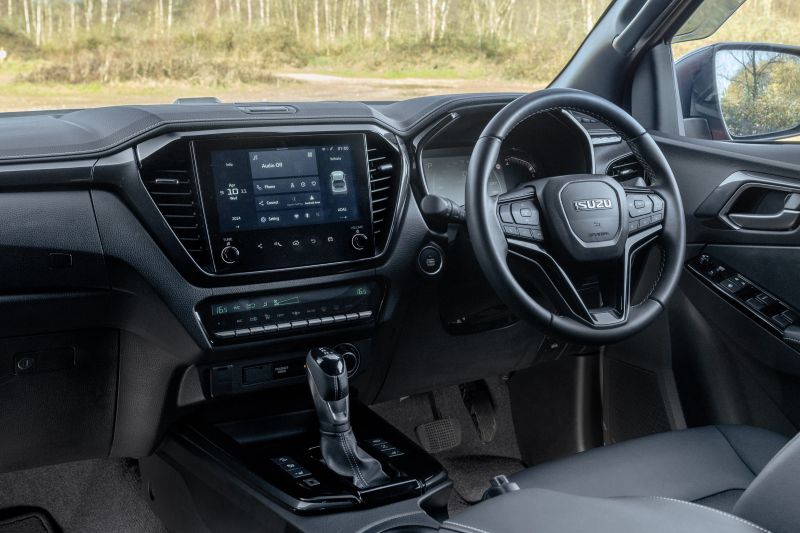
A key improvement was made with the introduction of a revised infotainment system with the flagship V-Cross trim gaining a clear 9-inch colour touchscreen.
Though also not the most contemporary dashboard design, everything is ergonomically laid out – more so than the touchscreen-dependent Ranger – with plenty of physical buttons easy-to-hand.
It too feels well-built and durable rather than plush, even if the V-Cross does get pretty close with its leather seating and infotainment upgrades.
Hilux vs D-Max: Standard Equipment & Features
The Toyota Hilux is available with four trims levels – Active, Invincible, Invincible X and GR Sport II.
The base Active is the only trim level available across Single, Extended and Double Cab body styles but is primarily targeted at those who need a bare essentials pick-up truck.
As such, steel wheels, plastic mouldings and a black PVC interior with rotary heating controls are on display to keep costs (and repairs) down, but it does also get an infotainment screen, air-conditioning, electric windows/mirrors and a reversing camera, plus a wealth of safety features, such as a Pre-Collision Warning System, Lane Departure Alert and Adaptive Cruise Control.
Upgrade to the Invincible and you’ll add front/rear parking sensors, heated front seats, LED lighting, dual zone air-conditioning and alloy wheels with a full-size spare.
Choose Invincible X and you’ll also enjoy exterior detail changes, ambient lighting, panoramic view monitor display and embedded navigation.
The top-of-the-range Toyota Hilux GR Sport II takes inspiration from the manufacturer’s Dakar Rally winning effort visually, while it also gets its own special treatment inside with silver lining on the dashboard, black roof lining and GR Sport branding on the push-button start, front sports seats and multi-information display.
The Isuzu D-Max also has a choice of four trims levels match up with the equivalent Hilux – Utility, DL20, DL40 and V-Cross.
Kit levels are generous with the Utility getting an 8-inch infotainment screen, automatic headlights, wireless Apple CarPlay/Android Auto, Bluetooth, air-conditioning, reach/rake steering wheel, Advanced Driver Assist Systems, Rough Terrain Mode, Cruise Control, a reversing camera and hill start/descent assist.
Move up to the DL20 and the D-Max adds alloy wheels, 4.2-inch multi-information display, speed sensitive power steering, rear parking sensors and heated front seats, while DL40 gets leather upholstery, chrome exterior styling, six speakers and an electric driver’s seat.
Choose the flagship D-Max V-Cross and you’ll get dark grey exterior detailing, unique alloy wheels, 9-inch infotainment screen, rear differential lock and front/rear parking sensors.
Hilux and D-Max: Reliability
Ask any Toyota Hilux or Isuzu D-Max owner what they like best about their pick-ups and there is a strong chance they’ll respond with ‘reliability’.
If past versions of the Hilux and D-Max have had a utilitarian air about them, the trade-off has often been rock-solid mechanicals that are built to withstand whatever is thrown at them without failing on you.
It helps to explain why both Toyota and Isuzu are confident enough to offer the Hilux and D-Max with very generous manufacturer warranties despite knowledge of the extreme conditions they are designed to tackle.
For the Hilux, Toyota extends its industry-leading 10-year warranty, named Toyota Relax. This is a service-activated warranty that provides up to 10 years or 100,000-miles of cover, whichever comes first, provided you choose official Toyota retailers for any work.
While there is a strong chance you’ll reach the mileage cap before you hit a decade, it is still going to be a long time before you make it to 100,000-miles. If nothing else, it’s a huge mark of confidence from Toyota that it builds vehicles to go the distance.
Isuzu has also been very generous with its D-Max warranty. While the time frame of the warranty is smaller at five years, it does go further at an impressive 125,000-miles.
Toyota Hilux vs Isuzu D-Max: Safety & Security
Both the Toyota Hilux and Isuzu D-Max have been assessed by EuroNCAP in crash testing, with both models receiving the maximum five-stars.
It should be noted that the last time the Hilux was tested was in 2016 and it required the then optional safety pack to be installed for it to reach five stars. However, the latest version of the Hilux comes with a full array of electronic safety assistance features to ensure it can meet that rating.
Similarly, the D-Max has also been updated since it was last tested in 2022, but it scored particularly well then anyway with an 86% result for both adult and child occupant safety.
Hilux vs D-Max: THE VERDICT
There is ultimately very little to choose between the Toyota Hilux and the Isuzu D-Max.
While both in their current guise might lack the polish and upmarket feel of the Ford Ranger and Volkswagen Amarok, they come across as more appropriate options for those who need a vehicle to fulfil both personal and business needs.
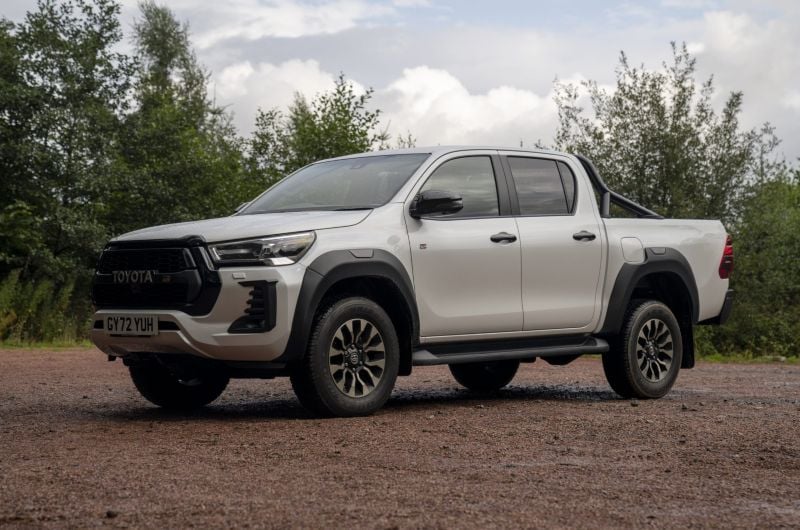
In the Hilux’s favour is its more powerful 2.8-litre D-4D engine that makes light work of heavy tasks, while it also has the more practical load bed. Plus, it feels well-screwed together, while you never shake the satisfying feeling that – being a Toyota Hilux – it will grind on no matter what you throw at it.
It’s a similar impression you get from the D-Max, where you sense every ounce of Isuzu’s specialist input, even when the going gets particularly tough.
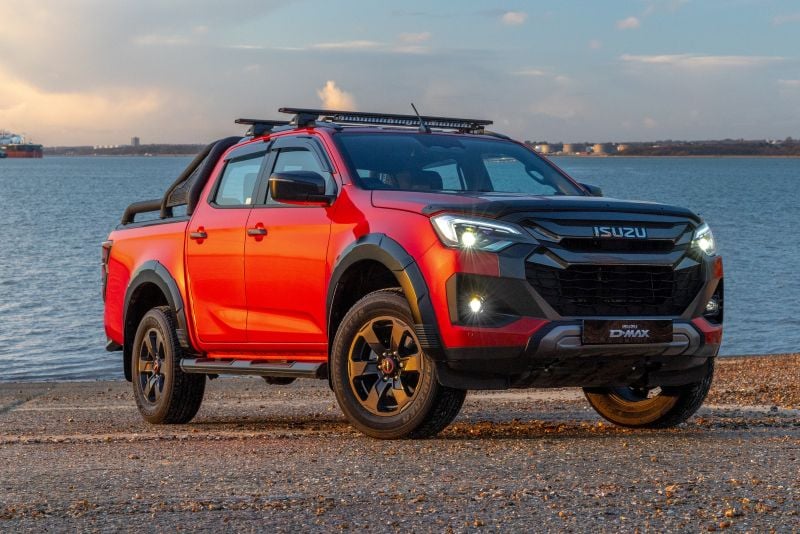
While not as spacious or powerful as the Hilux, the D-Max harnesses its drawbacks and turns them into advantages. As such, few pick-ups can match the Isuzu’s payload capability, while its lighter kerbweight means you don’t need to re-calculate speed limits when on the road.
At a time when most pick-up trucks are coveting a different type of audience, the fact the Hilux and D-Max can cater to both business and lifestyle customers is refreshing.

















